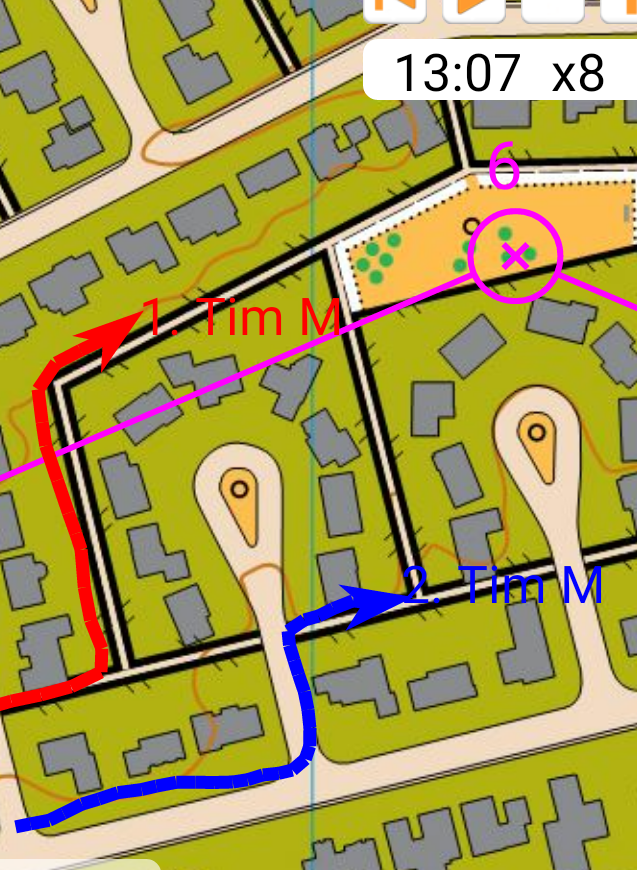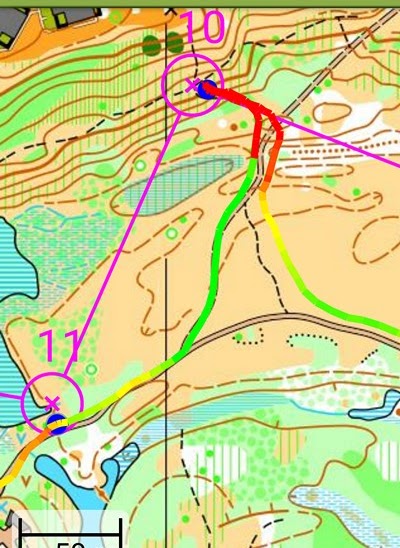Learn more about orienteering and our club
On this Page:
One-page Quick Start Guide to Orienteering and Understanding the Maps (All About Orienteering PDF)
How to Get Started with Our Club
How does an orienteering event work? (including map legends and description symbols)
Our Orienteering Skills and Training pages
Links to More Resources (Foothills Orienteering club info, other clubs, o-news, gear stores, etc.)
What is Orienteering?
Orienteering is a sport that combines running and navigation — imagine a cross-country running race where everyone picks their own route.
Orienteering is suitable for all ages and fitness levels. It can be enjoyed as a walk in the woods or as a competitive race combining strategic thinking, navigation, strength, and high-intensity cross-country running.
See our One-page Quick Start Guide to Orienteering and Understanding the Maps (All About Orienteering PDF)
This video offers an excellent explanation of orienteering (though you don't need to run fast like this elite orienteer):
The video below gives an excellent impression of a large international event in Switzerland, the Swiss O-week:
Here you can follow 2 juniors from Zurich through the forest during an event in Norway:
Here is a video created by Karin with some of our FWOC junior members:
How to Get Started (it's easy!)
You don't need to be able to read a map or run fast, just come along:
- Pick an event from the schedule.
- Read Alberta Orienteering Association's Safety Rules and Recommendations
- Dress to be outside (long socks or pants are recommended, bring a whistle if you have one).
- Arrive early and let us know if you need some pointers.
- Register and buy a membership to get your map (you can borrow a compass too). We offer 1-day trial memberships at many events.
- You're off!
How does an orienteering event work?
At a typical orienteering event, participants walk, jog, or race a course which is marked on their map from the start, through a series of mandatory locations that must be visited in order, and then to the finish.
The start is drawn on the map with a triangle, the mandatory locations, or controls, are drawn as circles and are numbered in the order they must be visited, and the finish is drawn with a double circle. The start, controls, and the finish are connected with lines in the order they must be visited to help follow the course visually.
At the location of each control, there is a marker, called a control flag, which has a unique control number (e.g. "53"). Competitors can look at the control descriptions on their map to make sure they are at the correct control location. The control descriptions also contain other symbols that describe the location of the control relative to a feature in the terrain (e.g. "at the eastern side of the large boulder").  If you are new, don't worry too much about control descriptions or ask another orienteer to explain some of them to you. You can print out an explanation of control description symbols or just a forest map legend from the Maprunner website. Note that Sprint Orienteering maps (e.g. the University of Calgary map) use a slightly different standard and contain a few more symbols and colours such as areas that are forbidden to enter/cross (see the Sprint-map legend from Maprunner). For a detailed description of all the mapping symbols and definitions along with pictures and examples, refer to the excellent IOF o-map Wiki.
If you are new, don't worry too much about control descriptions or ask another orienteer to explain some of them to you. You can print out an explanation of control description symbols or just a forest map legend from the Maprunner website. Note that Sprint Orienteering maps (e.g. the University of Calgary map) use a slightly different standard and contain a few more symbols and colours such as areas that are forbidden to enter/cross (see the Sprint-map legend from Maprunner). For a detailed description of all the mapping symbols and definitions along with pictures and examples, refer to the excellent IOF o-map Wiki.
Control flags usually have some type of device to record the competitors' visit. It may be a uniquely patterned hole-punch or, more commonly these days, an electronic device, which works with a memory stick carried by the competitor. This is how the event organizers ensure that competitors have completed the course successfully.
Participants choose their own route between each control. Simple routes involve following tracks and other line features like fences or creeks, more complex routes might involve following a compass bearing, running between point features like boulders or thickets, or following the contours. Finding the best route for you in the shortest time is the challenge.
At the finish, competitors hand in their control card or download the data from their memory stick to a computer. Results are then collated and if memory sticks (also called electronic punching) were used you can find out how long you took for each control and compare to other runners.
- FWOC Bylaws, Resolutions, Policies, and Reports
- learn.orienteeringcalgary.ca (GPS Orienteering and Training Information/Tutorials)
- members.orienteeringcalgary.ca (members-only permanent & GPS maps and courses)
- The O-Store (Ottawa-based online shop for orienteering gear)
- Gord's Running Store (Calgary-based running apparel and accessories)
- Strides Running Store (Calgary and Canmore-based running apparel and accessories)
- SportIdent Electronic Timing Information
- Barebones.ca (last event was in 2014 but still has active membership in southern Alberta)
- Edmonton Overlanders Orienteering Club
- Alberta Orienteering Association (your membership includes AOA membership)
- Alberta Parks' Fish Creek Park permanent orienteering course information (maps and brochures are at the bottom of their page). Note that the maps and information may be out of date, contact Alberta Parks for updated information.
- Orienteering BC
- Yukon Orienteering
- Orienteering Canada (oversees Orienteering in Canada)
- International Orienteering Federation (oversees Orienteering Internationally)



